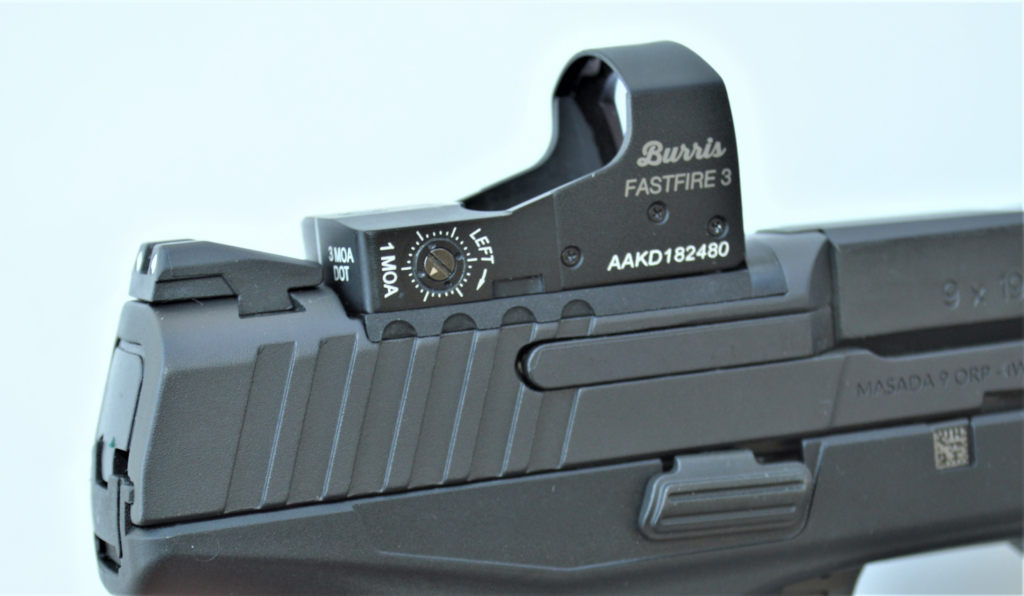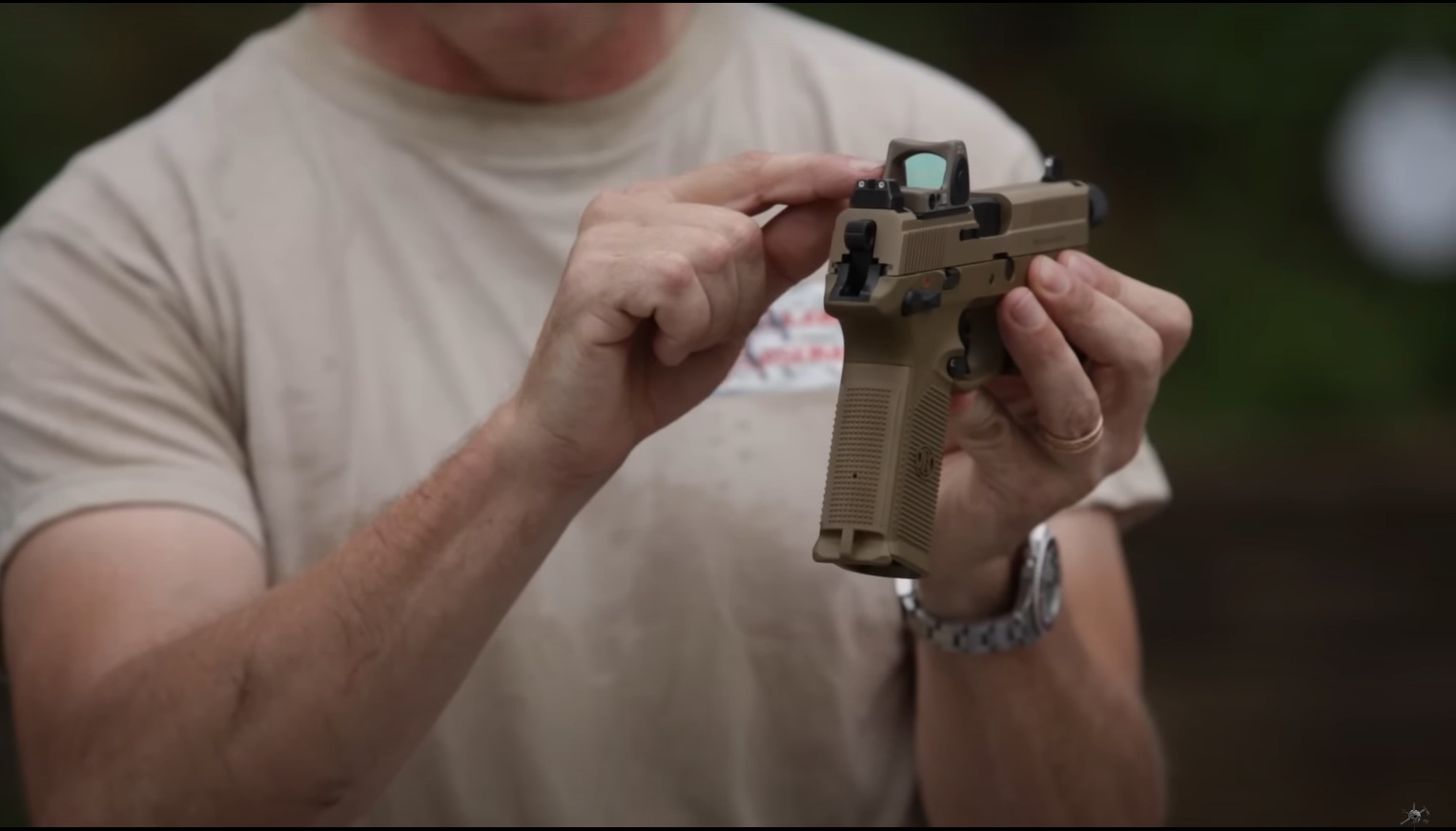Welcome to the ultimate guide on how to use a red dot sight. Whether you’re a seasoned shooter or a beginner, this comprehensive article will walk you through everything you need to know about red dot sights. From choosing the right sight to zeroing it in and mastering your shooting skills, we’ve got you covered.
Understanding Red Dot Sights
What is a Red Dot Sight?
A red dot sight, often referred to as an RDS, is a non-magnifying reflector sight that provides a clear, illuminated aiming point in the form of a red dot. It’s a popular choice among shooters for its simplicity and accuracy.
Types of Red Dot Sights
Red dot sights come in various forms, including:
1. Reflex Sights
These sights use a single lens to project the red dot onto your target. They are parallax-free, ensuring that the dot stays on target regardless of eye position.
2. Holographic Sights
Holographic sights use laser technology to create a reticle. They offer exceptional clarity and allow for faster target acquisition.
3. Tube Sights
Tube-style red dot sights resemble small scopes and are favored by hunters. They provide unlimited eye relief and a wide field of view.
Benefits of Using a Red Dot Sight
- Enhanced target acquisition;
- Improved accuracy in low-light conditions;
- Faster follow-up shots;
- Parallax-free aiming;
- Suitable for both handguns and long guns.
Choosing the Right Red Dot Sight
Consider Your Firearm
Before purchasing a red dot sight, ensure it’s compatible with your firearm. Different models are designed for handguns, rifles, and shotguns.
Dot Size Matters
The size of the red dot can vary, and choosing the right size depends on your shooting needs. Smaller dots are precise for long-range shots, while larger dots are quicker for close-quarters engagements.
Battery Life
Red dot sights are powered by batteries, so opt for one with a long battery life to minimize interruptions during use.
Mounting Options
Select the appropriate mounting system for your firearm. Picatinny or Weaver mounts are common choices, but some sights may require specialized mounts.
Mounting and Zeroing In
Mounting Your Red Dot Sight
- Ensure your firearm is unloaded and safe;
- Attach the sight to the mounting rail securely;
- Use a torque wrench to achieve the recommended tightness.
Zeroing In Your Red Dot Sight
Zeroing in your sight means aligning the point of impact with the red dot. Follow these steps:
- Set up a stable shooting platform;
- Begin at a short distance and fire a group of shots;
- Adjust the windage and elevation turrets to move the point of impact to the center of your target;
- Repeat this process at varying distances until your red dot is accurately aligned.

Using Your Red Dot Sight Effectively
Sight Picture and Target Focus
When using a red dot sight, focus on the target, not the dot. Place the dot where you want your shot to land while maintaining clear target focus.
Shooting Techniques
1. Quick Target Acquisition
Practice transitioning between targets swiftly. The red dot’s speed and accuracy will help you hit your mark consistently.
2. Shooting on the Move
Red dot sights are ideal for shooting while on the move. Maintain proper sight alignment while adjusting your position.
Maintaining Your Red Dot Sight
Battery Replacement
Regularly check your sight’s battery to avoid unexpected failures. Replace it according to the manufacturer’s recommendations.
Cleaning and Protection
Keep the lens clean and protected from debris and moisture. Use a microfiber cloth and lens covers for maintenance.
Red Dot Sight Accessories
To maximize the effectiveness of your red dot sight, consider investing in some useful accessories:
1. Magnifiers: These can be attached to your red dot sight to provide magnification for longer-range shots. They are especially handy for transitioning between close and distant targets.
2. Lens Covers: Protect your sight’s lens from dust, debris, and moisture with quality lens covers. This simple accessory can extend the life of your sight.
3. Mounting Options: Explore different mounting options to find the most comfortable and ergonomic setup for your shooting style.
4. Sunshades: Red dot sights can sometimes suffer from glare in bright sunlight. Sunshades can mitigate this issue, allowing you to maintain a clear view of the dot.
Red Dot Sights vs. Iron Sights
Many shooters wonder whether they should use red dot sights or stick with traditional iron sights. Each has its advantages:
Red Dot Sights
- Faster target acquisition;
- Easier to use in low-light conditions;
- Ideal for shooters with aging eyes.
Iron Sights:
- No reliance on batteries;
- Generally more rugged and durable;
- Excellent for close-quarters combat.
Ultimately, the choice between red dot sights and iron sights depends on your shooting preferences and the specific scenario.
Maintenance Tips
Keeping your red dot sight in top condition is essential for reliable performance. Here are some maintenance tips:
1. Regularly Check Zero: Periodically verify that your sight is still zeroed in. Factors like recoil can affect the point of impact.
2. Secure Mounting: Ensure that your sight is securely mounted, and all screws are tightened to prevent movement during use.
3. Battery Backup: Always carry spare batteries, especially if you rely on your red dot sight for self-defense or competition shooting.
4. Recoil Protection: If you’re using a red dot sight on a high-recoil firearm, consider using a shockproof protective cover to prevent damage.

Common Mistakes to Avoid
When using a red dot sight, there are some common mistakes to watch out for:
1. Neglecting Battery Checks: Failing to check the battery regularly can lead to a dead sight when you need it most. Establish a routine to prevent this.
2. Overreliance on the Dot: Remember that the red dot is not a magic solution. Proper shooting fundamentals, like trigger control and stance, are still crucial.
3. Neglecting Training: Invest time in training and practice with your red dot sight. Familiarity and muscle memory are key to using it effectively.
4. Ignoring Environmental Factors: Be aware of how environmental factors like rain, snow, or extreme temperatures can affect your sight’s performance.
Red Dot Sight Comparison Table
Let’s compare different types of red dot sights to help you choose the right one for your needs:
| Feature | Reflex Sight | Holographic Sight | Tube Sight |
|---|---|---|---|
| Technology | Reflective | Laser Holography | Reflector |
| Clarity | Good | Excellent | Very Good |
| Battery Life | Long | Moderate | Long |
| Reticle Options | Various | Limited | Limited |
| Parallax-Free | Yes | Yes | No |
| Field of View | Wide | Wide | Wide |
| Mounting Options | Various | Picatinny/Weaver | Picatinny |
Use this table as a quick reference when choosing your red dot sight, considering factors like technology, clarity, and battery life.
Conclusion
Congratulations! You’ve now mastered the art of using a red dot sight. These versatile optics can significantly enhance your shooting skills, offering speed and precision like never before. Remember to practice regularly to become proficient in using your red dot sight effectively.
Frequently Asked Questions
Red dot sights are best suited for short to medium-range shooting. For long-range precision, consider using magnified optics.
Yes, many hunters use red dot sights on shotguns for quick target acquisition during bird hunting or in dense brush.
No, not all red dot sights are compatible with night vision. Look for models specifically designed for night vision use.
Battery life varies between models but can range from several hundred hours to several years, depending on usage and battery type.
Yes, co-witnessing allows you to use both your iron sights and the red dot sight simultaneously for added versatility.
